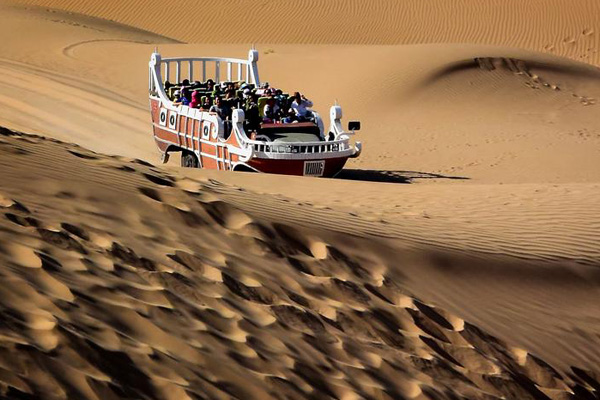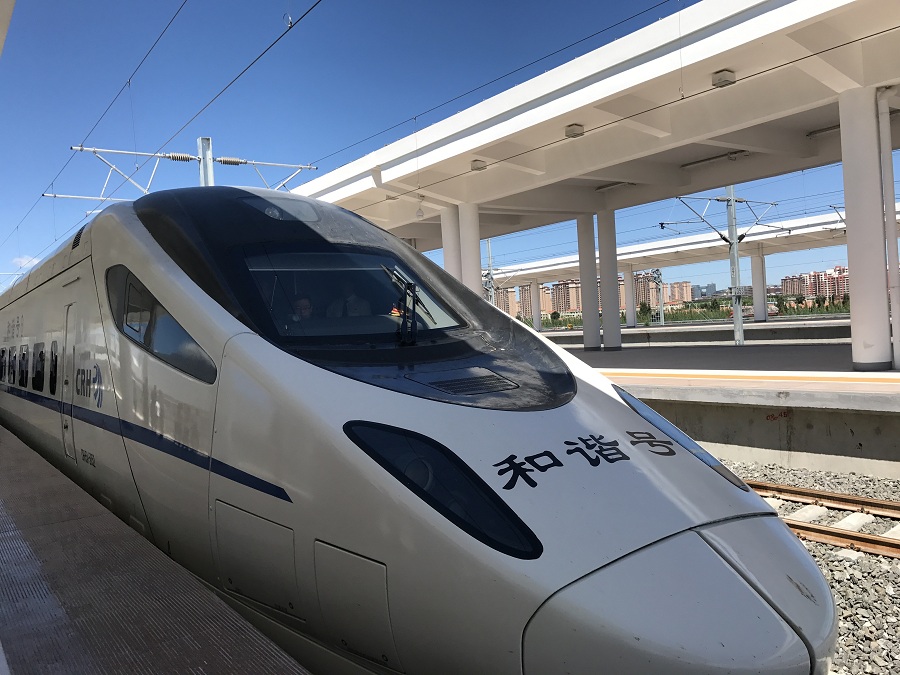Innovation helps desert tourism flourish in Inner Mongolia
By Zhang Yu and Yuan Hui in Ordos, Inner Mongolia (China Daily)
Updated: 2017-08-04
 |
|
Photo taken on Aug 6, 2015 shows people visiting Xiangshawan Desert in Ordos, North China's Inner Mongolia autonomous region. [Photo/Xinhua] |
Residents in desert areas in northern China's Inner Mongolia autonomous region have shaken off poverty and embarked on much better-off lives, after desert tourism driven by innovation was brought in.
The Kubuqi Desert in Ordos, the seventh-largest in China with an area of 18,600 square kilometers, was once the source of frequent sandstorms hitting the country's northern areas.
The desert's harsh environment resulted in poverty for local residents, most of whom only lived on raising livestock.
In the past 30 years, great efforts were made to tackle the desertification and improve residents' living standards.
Then, an innovative business model that incorporates governments, companies and locals was introduced with the aim of greening the region and creating jobs.
With guidance of governments and investment by the companies, farmers and herdsmen started to plant herbs, build solar power stations and develop tourist facilities.
In 2006, local governments and Elion Resources Group-a company engaged in ecological environmental protection-invested in building a new village.
Doodgatsaa village gathered 36 scattered households and provided them with free training, after which villagers started to run their own businesses.
"In the past, we lived in shabby houses built with dry grass and mud," said Tserenbaabuu, a 41-year-old herdsman in the village.
Tserenbaabuu and his family now live in a 110-square-meter house.
He added their total income has increased to 200,000 yuan ($30,300), 10 times as much as in the past when raising livestock was the only source of earnings.
It is the prospering of tourism in the region, he says, that has changed their lives.
A national 4A tourist site-Qixinghu Desert Eco-tourism Spot-emerged, as developers began tapping desert tourism resources. It attracts more than 120,000 tourists annually.
The site helped boost tourism in nearby villages, including Doodgatsaa village which has been equipped with 32 home-style hotels.
In partnership with two herdsmen, Tserenbaabuu bought 20 vehicles for off-road driving in the desert, with the help of banks in Ordos.
"A vehicle can hold three tourists, and traveling across the desert will cost each of them 240 yuan," he said.
He also hired 10 villagers as drivers and pays 4,000 yuan to each monthly from May to October, the peak season for desert tourism.
To support the business, he constructed a family hotel that can hold 20 tourists, accompanied by a restaurant to serve meals.
"When the hotel is full at peak season, I can earn 2,000 yuan each day," he said.
A household like his can earn 120,000 yuan annually on average, up from around 10,000 yuan before 2006.
"It's really a great change for me," Tserenbaabuu said.
China has total desert area of more than 2.6 million square kilometers, according to the sixth Kubuqi International Desert Forum held last week.
The experiences accumulated in the Kubuqi Desert can be a model to share nationwide and worldwide, said attendees at the forum.
Contact the writers at zhangyu1@chinadaily.com.cn

High-speed train debuts in Inner Mongolia
A bullet train departed Hohhot East Railway Station for Ulanqab marking the start of high-speed rail services using Inner Mongolia’s first newly-laid high-speed railway on Aug 3.
